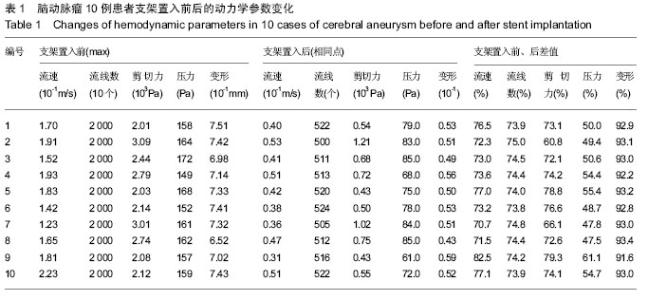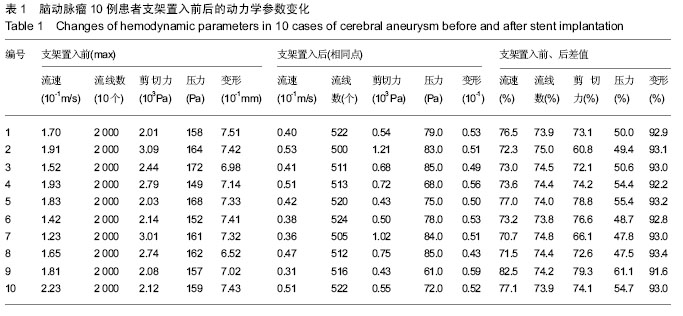| [1]Yasuno K, Bilguvar K, Bijlenga P, et al. Genome-wide association study of intracranial aneurysm identifies three new risk loci. Nature Genet. 2010;42(5):420-425.
[2]Frosen J, Tulamo R, Paetau A, et al. Saccular intracranial aneurysm:pathology and mechanisms. Actaneuropathologica. 2012;123(6): 773-786.
[3]Kang D, Yao P, Wu Z, et al. Ischemia changes and tolerance ratio of evoked potential monitoring in intracranial aneurysm surgery. Clin Neurol Neurosurg. 2013;15(5): 552-556.
[4]Brinjikji W, Lanzino Q Cloft HJ, et al. Endovascular Treatment of Very Small (3mm or Smaller) Intracranial Aneurysms Report of a Consecutive Series and a Meta-Analysis. Stroke. 2010;41(1): 116-121.
[5]Gory B, Kessler I, Nakiri GS, et al.Initial experience of intracranial aneurysm embolization using the balloon remodeling technique with Scepter C, a new double-lumen balloon. Inte Neuroradiol. 2012;18(3): 284.
[6]杜士刚. 血管介入栓塞术与开颅夹闭手术治疗脑动脉瘤临床分析[D]. 延边大学医学硕士论文, 2014.
[7]Tarnaris A, Haliasos N, Watkins LD. Endovascular teatment of ruptured intracranial aneurysms During pregnancy: is this the best way forward? Case report and review of the literature. Clin Neurol Neurosurg. 2012;114:703-706.
[8]Seo DH, Kang HS, Kim DW, et al. Guidelines for the management of unruptured intracranial aneurysm. Korean J Cereb Surg. 2011;13(4): 279-290.
[9]Vlak MH, Algra A, Brandenburg R, et al. Prevalence of unruptured intracranial aneurysms,with emphasis on sex, age,comorbidity, country, and time period: a systematic review and meta-Analysis. Lancet Neurol. 2011;10(7): 626-636.
[10]Molyneux AJ, Kerr RS, Yu LM, et al. International subarachnoid aneurysm trial (ISAT) of neurosurgical clipping versus endovascular coiling in 2143 patients with ruptured intracranial aneurysms: a randomised comparison of effects on survival, dependency, seizures,rebleeding, subgroups, and aneurysm cclusiono. Lancet. 2005;366:809-817.
[11]Xiang J, Tremmel M, Kolega J, et al. Newtonianviscosity model could overestimate wall shear stress in intracranial aneurysm domes and underestimate rapture risk. J Neurointerv Surg. 2012;4(5): 351-357.
[12]Li MH,Li YD, Tan HQ, et al. Contrast-free MRA at 3.0 T for the detection of intracranial aneurysms. Neurology. 2011;77(7):667-676.
[13]Shimada K, Wada K, Tada Y, et al. Roles of Angiotensin (1-7) And Angiotensin II Type 2 Receptor on Intracranial Aneurysmal Rupture. Stroke. 2014;45(Suppl 1): A132-A132.
[14]Pierot L,Spelle L,Vitry F,et al. Similar safety in centers with low and high volumes of endovascular treatments for unruptured intracranial aneurysms wvaluation of the analysis of treatment by endovascular approach of nonruptured aneurysms study.ATNR.2010;31:1010-1014.
[15]Parodi JC,Palmaz JC,Barone HD.Transfoemoral Intraluminal Graft Implantation for Abolominal Aortic Aneaurysms.Ann Vas Surg.1991;5(6):491-499.
[16]Garza L,Aude YW,Saucedo JF.Can wo prevent in-stent restensis.Curr Opin Cardiol.2002;17(5):518-525.
[17]Cebral JR,Lohner R.From medical images to anatomically accurate finite elemetgrids.Inter J Numer Method Eng.2001;51(8):985-1008.
[18]Aenis M,Stancampiano AP,Wakhloo AK,et al.Modeling of flow in a straight stented and nonstented side wall aneurysm model.J Biomech Eng.2007;119(2):206-212.
[19]Eisenberg MJ,Rice SA,Paraschos A,et al.The Clinical Spectrum of Patients with Aneurysms of the Ascending Aorta.Am Heart J.2008;125(5): 1380-1385.
[20]Orr AW,Helmke BP,Blackman BR,Schwartz MA. Mechanisms of mechanotransduction.Dev Cell. 2006;10:11-20.
[21]Pedley TJ.The fluid mechanics of large blood vessels.UK:Cambridge University Press, 1980:56-59.
[22]Frösen J,Piippo A,Paetau A,et al.Remodeling of saccular cerebral artery aneurysm wall is associated with rupture:histological analysis of 24 unruptured and 42 ruptured cases.Stroke.2004;35(10):2287-2293.
[23]Pakala R,Watanabe T,Benedict CR.Induction of endothelial cell proliferation by angiogenic factors released by activated monocytes.Cardiovasc Radiat Med.2002;3(2):95-101.
[24]穆士卿,杨新健,张莹,等.颅内动脉瘤的三维数值模拟分析[J].中国微侵袭神经外科杂志,2008,13(10):459-462.
[25]Pakala R,Watanabe T,Benedict CR.Introduction of endothelial cell proliferation by angiogenic factors released by activated monocytes.Cardiovasc Radiat Med.2002;3(2):95101.
[26]刘磊,许百男.血流动力学和病理学因素在颅内动脉瘤发病机制中的作用[J].中华老年心脑血管病杂志, 2008,10(5):391-392.
[27]Huang M,Liu T,Ma P,et al.c-Met-mediated endothelial plasticity drives aberrant vascularization and chemoresistance in glioblastoma.J Clin Invest. 2016. pii:84876.
[28]Zhang B,Qiangba Y,Shang P,et al.Gene expression of vascular endothelial growth factor A and hypoxic adaptation in Tibetan pig.J Anim Sci Biotechnol. 2016;7:21.
[29]Pan CJ,Pang LQ,Gao F,et al.Anticoagulation and endothelial cell behaviors of heparin-loaded graphene oxide coating on titanium surface. Mater Sci Eng C Mater Biol Appl.2016;63:333-340.
[30]Seedorf GJ,Metoxen AJ,Rock R,et al.Hepatocyte Growth Factor as a Downstream Mediator of Vascular Endothelial Growth Factor-Dependent Preservation of Growth in the Developing Lung.Am J Physiol Lung Cell Mol Physiol. 2016:ajplung.00423.2015.
[31]Cui J,Zhang F,Wang Y,et al.Macrophage migration inhibitory factor promotes cardiac stem cell proliferation and endothelial differentiation through the activation of the PI3K/Akt/mTOR and AMPK pathways.Int J Mol Med.2016.doi:10.3892/ijmm. 2016.2542. [Epub ahead of print]
[32]Lu Q,Schnitzler GR,Ueda K,et al.ER Alpha Rapid Signaling Is Required for Estrogen Induced Proliferation and Migration of Vascular Endothelial Cells. PLoS One.2016;11(4):e0152807.
[33]Ke H,Masoumi KC,Ahlqvist K,et al.Nemo-like kinase regulates the expression of vascular endothelial growth factor (VEGF) in alveolar epithelial cells. Sci Rep.2016;6:23987.
[34]王晓飞.植入冠状动脉支架后病灶内的血液流动特性研究[D].西安:西安交通大学,2010. |

